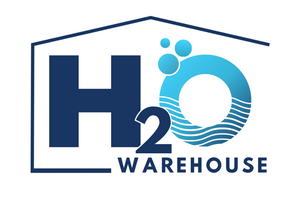Bacteria & E.coli
Addressing Bacterial Contamination in Your Water: Understanding E. coli and Solutions
Bacterial contamination, particularly Escherichia coli (E. coli), poses significant risks to the safety and health of household water supplies. Understanding the sources, effects, and solutions to combat bacterial contamination is essential for safeguarding water quality and preventing waterborne illnesses.
The Threat of E. coli in Water:
- Health Risks: E. coli is a type of bacteria commonly found in the intestines of humans and animals. While most strains are harmless, certain strains can cause severe illness when ingested through contaminated water. Symptoms of E. coli contamination include diarrhoea, abdominal cramps, nausea, and in severe cases, kidney failure.
- Waterborne Transmission: E. coli contamination in water typically occurs due to faecal matter entering water sources, such as rivers, lakes, or groundwater, through sewage leaks, agricultural runoff, or improper waste disposal. Once present in water supplies, E. coli can proliferate and pose a significant health risk if consumed.
- Regulatory Standards: Regulatory agencies, such as the Environmental Protection Agency (EPA), establish standards and guidelines for safe levels of bacteria in drinking water. Elevated levels of E. coli indicate potential faecal contamination and require immediate action to ensure water safety.
Strategies for Bacterial Removal:
- Disinfection Methods: Chlorination and ultraviolet (UV) disinfection are common methods employed to eliminate bacterial contaminants, including E. coli, from water supplies. Chlorine effectively destroys bacteria by oxidising cellular components, while UV light disrupts bacterial DNA, rendering them unable to replicate.
- Boiling Water: Boiling water is a simple and effective method to kill bacteria, including E. coli. Bringing water to a rolling boil for at least one minute ensures microbial destruction, making it safe for drinking and cooking purposes.
- Filtration Systems: Water filtration systems equipped with fine-mesh filters or micron-rated cartridges can effectively remove bacteria, including E. coli, from water sources. Point-of-use or point-of-entry filtration systems offer continuous protection against bacterial contamination, providing clean and safe water for consumption.
- Regular Testing and Maintenance: Regular testing of water quality, especially for E. coli and other bacteria, is essential for early detection of contamination. Implementing routine maintenance procedures for water treatment systems ensures optimal performance and effectiveness in removing bacterial pollutants.
Conclusion:
Bacterial contamination, particularly E. coli, poses a serious threat to water quality and public health. By understanding the sources and risks associated with bacterial contamination, homeowners can take proactive measures to safeguard their water supplies. Implementing appropriate disinfection methods, filtration systems, and regular testing protocols can effectively mitigate the risks of E. coli contamination, ensuring access to safe and potable water for household use. If you suspect bacterial contamination in your water supply, promptly consult with water quality experts and follow recommended treatment guidelines to protect the health and well-being of your family.

- Choosing a selection results in a full page refresh.

